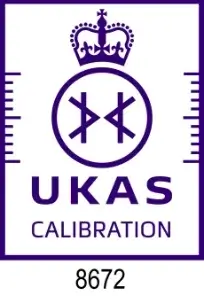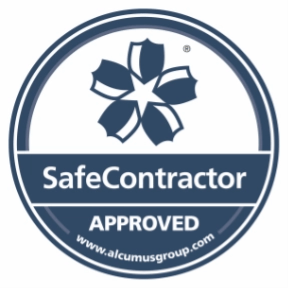Borescopes is the term describing most remote visual inspection tools (RVI). As the names suggest, rigid borescopes have a solid structure that can only feed into access areas using a straight line. Flexible borescopes can bend around corners to access more intricate areas within precision manufactured assemblies/components.
If you need to choose a rigid or flexible borescope, the decision depends on the specific application and the inspection environment. Both rigid and flexible borescopes can be used for a broad range of precision applications, but each have their advantages. Some applications make it impossible to use a rigid borescope, whereas others may benefit from the extra clarity often found with rigid models.
We have broken down the key differences between rigid and flexible borescopes, their best use cases, and the factors to consider when making a choice between the two – ensuring you have all the information you need to make the best choice.
What is a Rigid Borescope?
Rigid borescopes consist of a solid, straight tube that houses the optical system. These borescopes are designed for inspecting straight-line areas and are used in applications where the inspection path does not include curves or obstacles. Unless flexibility is essential, rigid borescopes are often the first choice for manufacturers and quality controllers due to their durability, clarity, and affordability.
Key Features:
- Solid Tube: The tube is made from metal or other rigid materials, providing stability during inspection.
- Optical Clarity: Rigid borescopes typically offer excellent image clarity due to their simple, direct optical system, which does not need to bend light around curves.
- Durability: The rigid construction makes these borescopes robust, ideal for industrial environments where they may encounter harsh conditions.
Advantages:
- Higher Image Quality: Because the optical system does not have to navigate bends, rigid borescopes tend to deliver sharper, clearer images compared to flexible borescopes.
- Affordability: Rigid borescopes are often cheaper than flexible models, making them a cost-effective option for simple, straight-line inspections within precision manufacturing industries.
- Durability: The sturdy construction ensures they can withstand tough environments, including impacts or elevated temperatures.
- Ease of Use: Since they do not have complex articulation mechanisms, rigid borescopes are easier to operate and maintain making remote visual inspection possible by untrained technicians.
Considerations:
- Limited Manoeuvrability: Even the slightest of bends or smallest of obstacles can cause use issues with rigid borescopes as they have zero flexibility.
- Restricted Access: If the area to be inspected has bends, curves, or obstacles, a rigid borescope will not be able to provide access, limiting its usefulness in complex inspections.
Best Applications:
- Straight-Line Inspections: Ideal for examining objects where a direct line of sight is available, such as firearm barrels, engines, and turbine blades.
- Industrial Use: Useful for manufacturing quality control and metal casting inspections, where parts are accessible in a straight line.
- Aerospace: Commonly used in inspecting straight areas of aircraft engines or mechanical systems where rigidity and clarity are needed.
An example of a rigid borescope is the Hawkeye Pro Hardy available from Optimax
What is a Flexible Borescope? (Fibrescopes, Videoscopes and Endoscopes)
Flexible borescopes, also known as fibrescopes or videoscopes, consist of a flexible robust outer sheath that can bend and navigate through complex paths. Illumination is from a LED source via fibre optic bundles running through the outer sheath, at the end of the sheath is fitted one or two high-resolution micro cameras to capture images. Flexible options are available on eyepiece versions such as the Hawkeye Blue Flexible which also can have manual articulation, Video systems are also fitted with the flexible probe such as the Hawkeye Q2 Dual View and include joystick operated articulation.
These borescopes and videoscopes are designed for use in scenarios where the inspection path includes curves, tight spaces, or areas that are not directly accessible with a straight probe. Flexible borescopes can be known as endoscopes; however, this term is usually used in medical applications and can also include the terms fibrescope and videoscope too.
Key Features:
- Flexible Tube: The insertion tube is made of robust flexible materials, allowing it to bend around corners and obstacles.
- Articulation: Many flexible borescopes feature articulation, which enables the user to control the direction of the tip using a joystick. This allows the user to benefit from a variety of viewing angles while inspecting complex components.
- Camera or Fibre Optic System: Flexible borescopes have a fibre optic system illuminated by an LED source and the inspection area viewed through an eyepiece or a handheld control unit with a screen to capture images and video.
Advantages:
- Manoeuvrability: The key advantage of flexible borescopes and endoscopes is their ability to navigate through complex, curved areas. This makes them versatile for a wide range of RVI applications.
- Articulation: With tip articulation, flexible borescopes allow users to inspect around bends and in crevices to examine areas that would be impossible to view with a rigid borescope.
- Versatility: Flexible borescopes can be used in a broad range of industries thanks to their ability to inspect small, complex features with difficult access. Some of the slimmest flexible fibrescopes are less than 1mm in diameter meaning they can often reach places rigid borescopes could not.
- Longer Reach: Flexible borescopes are available in longer lengths, above 5M than rigid ones, making them suitable for deep inspections, such as in fine tubes, aircraft engines and automotive or within long pipelines.
- User-Friendly Operation: With digital displays and often intuitive controls, video borescopes are user-friendly, reducing the learning curve and enhancing inspection efficiency.
- Data Storage and Sharing: The ability to capture and store images and videos digitally facilitates easier reporting, sharing, and archiving of inspection results.
Considerations:
- Image Quality: Flexible borescopes offer clear and detailed images, though they may not achieve the absolute pin-sharp clarity of a rigid borescope due to the nature of light transmission through their flexible optics.
- Cost: Flexible borescopes tend to be more expensive than rigid models due to their advanced design and, in the case of video systems, display screen and recording capability.
- Robustness: Due to their flexible construction, these borescopes are designed for specific applications where manoeuvrability is key. Their robust performance in demanding environments can be optimized through attentive use and storage
- Typical Applications:
- Curved or Complex Paths: Flexible borescopes excel in situations where there are multiple bends or obstacles, such as inside pipes, engines, or ventilation systems.
- Automotive Inspections: Frequently used in automotive repair to inspect engine parts, fuel injectors, and exhaust systems where straight-line access is not possible.
- Aerospace and Aviation: In aviation, flexible borescopes are used to inspect complex engine components, turbines, and ducts.
- Plumbing and Building Maintenance: Ideal for inspecting blocked or damaged pipes, ducts and other infrastructure that involves twists and turns.
Key Comparison: Rigid vs. Flexible Borescopes
| Feature | Rigid Borescopes | Flexible Borescopes |
| Manoeuvrability | Straight-line only | Navigates bends, curves, and obstacles |
| Image Quality | Superior clarity due to direct optical path | Good, but may be lower than rigid models |
| Durability | More robust and resistant to damage | More fragile, especially in harsh environments |
| Cost | More affordable | More expensive due to flexibility and articulation |
| Articulation | None | Often features 2-way or 4-way articulation |
| Use Cases | Straight paths (e.g., engines, barrels) | Complex paths (e.g., pipes, engines, turbines) |
| Length | Shorter, up to 2m | Longer, up to 30m or more for deep inspections |
| Best Applications | Firearms, straight machinery parts, aerospace | Automotive, plumbing, aerospace, industrial |
Choosing the right borescope
Selecting the right borescope depends on the specific requirements of the inspection task. Rigid borescopes are optimal for high-resolution, straight-line inspections in durable environments. Fibreoptic borescopes provide flexibility and access to narrow, winding spaces, making them ideal for intricate inspections. Video borescopes offer advanced imaging capabilities, articulation, and digital documentation, suitable for complex and highly detailed inspections. By understanding the unique advantages of each type of borescope, professionals can choose the most appropriate tool to ensure thorough and efficient inspections.
All these types of borescopes are manufactured by Gradient Lens Corporation and are available in the UK, Ireland and Europe from Optimax Imaging and Inspection.











